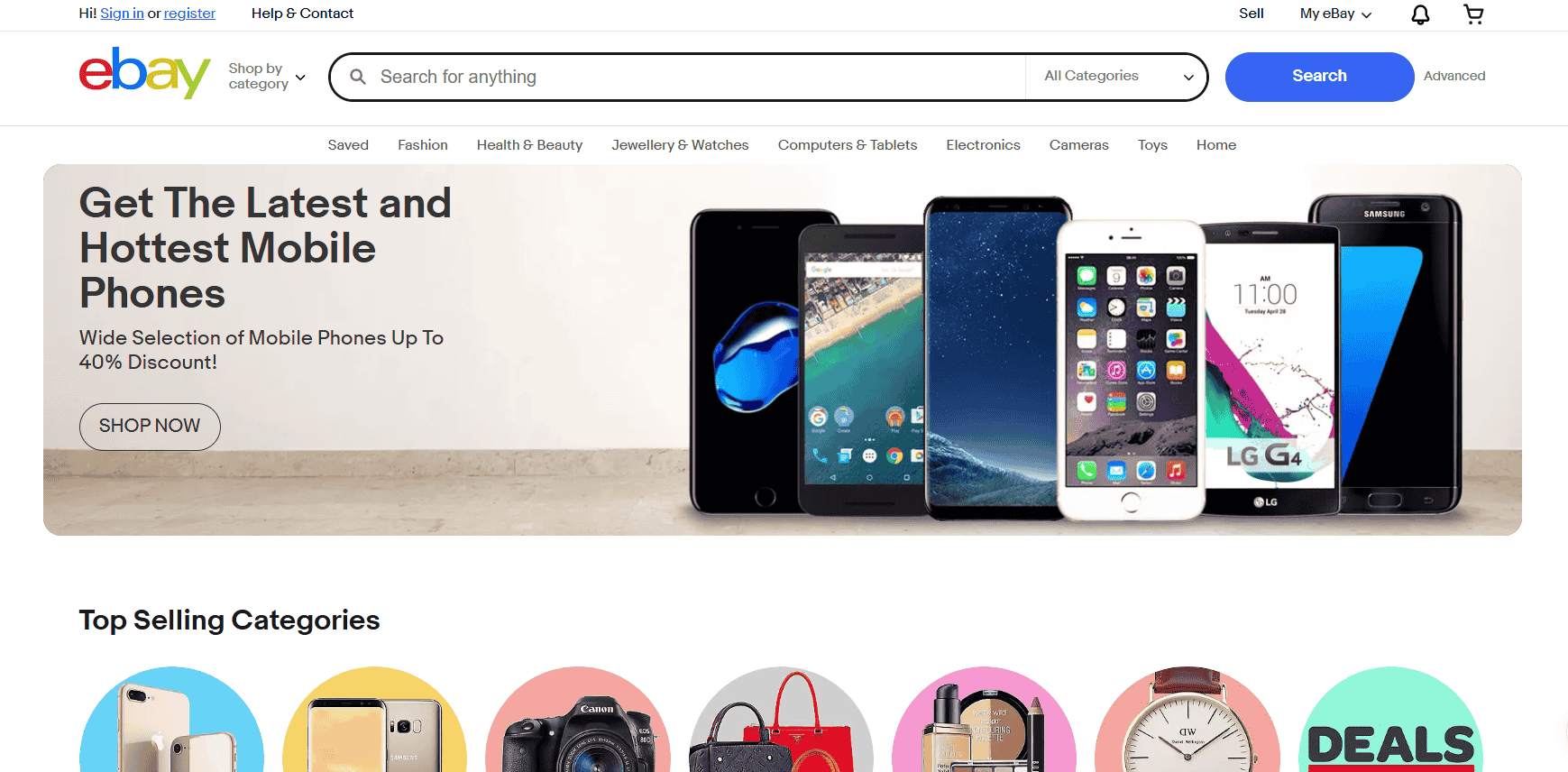There comes a point in every online business where what once worked perfectly begins to feel limiting. You start to notice bottlenecks: slower site performance, inventory sync issues, pricing that can’t adapt to different buyer segments, and workarounds piled on top of workarounds.
That’s usually the signal that your eCommerce platform is no longer keeping up. SAP Commerce Cloud is built for that exact moment.
This isn’t an out-of-the-box tool for beginners. It’s a serious, enterprise-grade digital commerce platform designed for companies that are scaling fast, expanding into new markets, or managing growing product complexity.
What makes it so effective is how well it supports that shift, from managing orders and storefronts to orchestrating multi-region, multi-channel customer journeys in real time.
If you’re running a business in 2025 and you’re starting to deal with thousands of SKUs, region-specific promotions, and backend systems like SAP ERP or SAP CRM, you need more than plug-ins and patches.
You need a platform that was built to handle the messy, layered reality of global eCommerce. SAP Commerce Cloud does that with remarkable control and flexibility.
Some of the clients I’ve worked with didn’t realize how much they were missing until they switched. One, in particular, ran a fast-growing industrial supply business that sold both to consumers and wholesale buyers.
Shopify Plus helped them launch, but by year three, it couldn’t keep up with contract pricing, custom order approvals, or real-time inventory updates across locations. Orders were slipping, customers were getting the wrong quotes, and internal teams were burned out.
We migrated them to SAP Commerce Cloud, and within months, everything changed. They introduced account-specific catalogs, automated their recurring order workflows, and gave each client a personalized portal.
It was smoother and smarter. Their average order value jumped by 30%, and their support tickets dropped almost overnight.
If you’re no longer in the “startup” phase and you’re building for stability, scale, and long-term growth, SAP Commerce Cloud offers the kind of structure that doesn’t crack under pressure. It’s not always the first platform sellers start with, but it’s often the last one they’ll need.
What Is SAP Commerce Cloud?
SAP Commerce Cloud is a cloud-based enterprise eCommerce platform built to handle complex digital commerce needs. Originally known as SAP Hybris, it has evolved into a modular, scalable solution under the SAP Customer Experience (SAP CX) suite.
What makes SAP Commerce Cloud particularly effective for growing businesses is how it brings every part of your commerce operation under one roof. You’re not juggling separate tools for order management, product content, or customer interactions.
Instead, everything feeds into a single system, giving you better visibility and more control over the full customer journey. It allows you to create and manage customer experiences across multiple channels, from your online store to marketplaces, mobile apps, social commerce, and physical stores.
If you’re aiming for a true omnichannel presence, this is the kind of platform that supports that vision without compromise.
I’ve worked with sellers who were tired of fragmented experiences across sales channels where a product update on their website wouldn’t reflect on their mobile app for hours, or where their sales reps couldn’t access accurate inventory. SAP Commerce Cloud closed those gaps.
With its headless commerce architecture and API-first design, you can deliver consistent experiences at scale while connecting to virtually any backend system you already use, especially SAP ERP and SAP CRM.
That’s a huge deal for businesses already using SAP’s tools. You’re not forcing different systems to talk to each other with duct tape and plugins. It’s a native fit that saves time, reduces errors, and makes your operations a lot smoother.
In short, SAP Commerce Cloud gives you the kind of foundation most fast-growing eCommerce businesses need, but rarely get from entry-level platforms. If you’ve ever felt like your tech stack is duct-taped together, this is the upgrade that replaces the tape with steel beams.
Key Features That Matter
What makes SAP Commerce Cloud stand out? Here are the core features you’ll want to know:
Headless Commerce
You can separate your front-end presentation layer from the backend logic, giving your developers complete freedom to customize customer experiences on web, mobile, or IoT platforms. That means you’re no longer boxed in by templates or rigid design rules.
Whether you’re launching a mobile-first storefront or embedding product browsing in a smart fridge interface (yes, some of my clients are already exploring that), headless commerce gives you the flexibility to experiment without rewriting your entire backend.
Omnichannel Experience
Manage customer interactions across online, mobile, in-store, and call centers using a single unified platform. Everything syncs in real time, so your customers can start a transaction on your app and finish it in-store or vice versa without a hiccup.
This matters more than ever in 2025, where hybrid shopping habits have become the norm. Buyers expect that smooth, uninterrupted journey. SAP Commerce Cloud helps you deliver it.
Product Content Management (PCM)
Control and enrich product data from one place, ensuring consistent information across channels. You’re not stuck copying and pasting the same product description into five different systems.
When your inventory includes thousands of SKUs with regional variants, translated specs, or seasonal pricing, a centralized PCM system keeps your catalog accurate and organized. I’ve seen firsthand how this reduces customer complaints about mismatched details and incorrect pricing.
Advanced Personalization
Target different segments with tailored promotions, pricing, and content based on behavior, location, or purchase history. Whether you’re serving up product recommendations for repeat buyers or offering region-specific bundles, the system adapts to the customer automatically.
One of my retail clients doubled their click-through rate on promo banners just by using SAP’s behavioral segmentation tools.
Integrated B2B and B2C Support
Handle B2B workflows like bulk ordering, contract pricing, and account management, while still serving B2C customers through the same backend. That’s huge for hybrid sellers who’ve been forced to run two separate websites.
With SAP Commerce Cloud, you can simplify your stack and give both types of customers exactly what they need, whether they’re placing a $30 order or a $30,000 one.
Cloud Scalability
Rely on the power of SAP’s cloud infrastructure to scale as your business grows. Whether you’re preparing for a holiday spike or expanding to a new region, you don’t have to worry about performance bottlenecks or costly downtime.
One of my clients processed over 100,000 orders during a weekend flash sale without a single crash or slowdown, and they didn’t have to upgrade their servers manually. SAP’s infrastructure handled it quietly in the background.
These features aren’t just impressive on paper. They solve the real, daily problems that mid-size and large online businesses deal with, problems like inventory mismatches, disconnected systems, and customer drop-offs caused by clunky checkout flows.
SAP Commerce Cloud gives you the kind of control, speed, and flexibility that keeps those problems from scaling alongside your growth.

How Online Sellers Benefit From SAP Commerce Cloud
Online sellers who switch to SAP Commerce Cloud usually fall into two categories: those managing high volumes and those requiring deep customization. These are the sellers who have outgrown simple storefront builders and need something built for the long haul.
If you need a platform that works globally, supports complex pricing models, and integrates with your supply chain in real time, this is where SAP Commerce Cloud excels.
It’s not just about selling more. It’s about handling more complexity without losing control. That includes things like dynamic product catalogs, region-specific promotions, multiple currencies, contract-specific pricing, and real-time stock visibility.
You’re no longer guessing whether your backend can keep up with your growth. You know it can, because SAP Commerce Cloud was built to scale with businesses doing millions in revenue across multiple verticals.
One of my clients ran a multi-brand electronics business selling both directly to consumers and to B2B resellers. Their challenge? Their Shopify Plus setup couldn’t support contract-based pricing, bulk ordering, or real-time ERP inventory.
Orders were delayed. B2B clients were frustrated. Sales reps had to constantly send emails to confirm stock and pricing, which slowed everything down.
We migrated them to SAP Commerce Cloud, and within four months, their B2B segment grew by 38%, and customer satisfaction scores spiked due to accurate order fulfillment and personalized catalogs.
Their B2C storefront also improved. Product pages loaded faster, abandoned cart rates dropped, and upsell recommendations became more relevant. The company went from reactive to proactive, and that made a measurable difference in both revenue and reputation.
If you’re in a similar position—managing growth while dealing with technical limitations—SAP Commerce Cloud doesn’t just offer features. It offers breathing room. It gives your business space to grow, adapt, and perform at a level that matches your ambition.
Why Choose SAP Commerce Cloud Over Other Platforms?
If you’re comparing SAP Commerce Cloud to other enterprise eCommerce platforms, it helps to know what sets it apart.
Salesforce Commerce Cloud focuses heavily on AI and built-in CRM integration, which can be useful if your strategy revolves around predictive recommendations and customer insights baked directly into the sales cycle. It’s a solid choice for brands already deep into Salesforce’s ecosystem.
Adobe Commerce (Magento) offers robust open-source flexibility, giving you room to customize nearly everything, but it also demands a high level of developer involvement.
I’ve worked with businesses that loved Magento’s freedom until they realized they needed a full-time team just to manage updates, patches, and bugs. For smaller in-house teams, this gets overwhelming quickly.
Shopify Plus is simple to manage and great for speed, but limited in backend customization. You’re generally working within the boundaries of pre-built apps, which can create friction when trying to support complex pricing models, advanced workflows, or large-scale integrations with ERPs or CRMs.
Some of my clients found themselves relying on workarounds and third-party plugins just to get basic features working at scale.
SAP Commerce Cloud, on the other hand, is best for:
- Global sellers with complex catalogs – If you’re selling thousands of SKUs across different regions, with varying tax rules, languages, and currency formats, SAP helps you manage it all in one place.
- Businesses needing deep SAP ERP integration – The connection between SAP Commerce Cloud and SAP ERP is seamless. You’re not patching together systems and hoping they sync. It’s designed to speak the same language, which saves time, reduces errors, and gives your teams more confidence.
- B2B commerce with contract pricing and tiered approvals – This is where most platforms fall short. SAP handles those complex sales cycles, layered account hierarchies, and approval workflows like they were built-in from day one because they are.
- Teams wanting complete control over UI/UX – Whether you’re building a custom frontend from scratch or fine-tuning how customers interact with every touchpoint, SAP’s headless capabilities give you full design freedom.
If your business is poised to scale across countries or handle thousands of SKUs with unique rules, SAP gives you an unmatched advantage. It’s a matter of choosing a system that can actually keep up with where your business is going.
I’ve seen too many online sellers hit technical ceilings with lighter platforms. SAP Commerce Cloud helps you remove those ceilings entirely.
Who Should Consider SAP Commerce Cloud?
Not every eCommerce platform is built for scale, complexity, or long-term growth, but SAP Commerce Cloud is. That said, it’s not for everyone. If you’re trying to figure out whether this platform actually fits your business model, here’s a quick breakdown of who should seriously consider making the switch:
B2B businesses needing account-specific catalogs
If you’re in B2B and you’ve ever had to explain to a client why their pricing or catalog isn’t showing up correctly, you already know the pain of working with limited platforms. SAP Commerce Cloud is built to handle account-based pricing, exclusive product visibility, and contract-based workflows.
One of my clients in industrial supply used it to serve over 500 different business accounts, each with its own negotiated pricing, product access, and payment terms. Before switching, they had to manually update spreadsheets. After the switch, their entire sales process became automated and consistent.
Global brands that need multiple storefronts in different regions
Whether you’re selling in the US, Europe, or Asia, each market has its own tax laws, fulfillment rules, payment methods, and even shopping behavior. SAP Commerce Cloud lets you manage all your storefronts from one backend while giving each region its own language, currency, promotions, and product availability.
You’re not cloning sites or juggling a mess of plugins. I’ve worked with retailers who saved weeks of setup time every time they launched in a new country, and they maintained consistent branding across the board.
Companies with heavy backend dependencies (ERP, PIM, CRM)
If your eCommerce site needs to stay tightly synced with systems like SAP ERP, product information management (PIM) tools, or customer relationship management (CRM) platforms, SAP Commerce Cloud is designed with that in mind.
You can’t afford data delays or mismatches when you’re processing hundreds of orders daily. One business I worked with struggled for years with syncing product data from a third-party PIM to their storefront. SAP solved it almost immediately with real-time integration and clean data flows.
Sellers ready to adopt headless commerce or composable architecture
If you’re aiming for speed, flexibility, and future-proof development, SAP Commerce Cloud supports headless commerce and composable architecture out of the box.
That means you can build frontends however you like—using the latest frameworks and technologies—while still relying on a rock-solid backend to power it all. For tech teams that want more control without compromising performance, this setup is a huge win.
In short, if your business is entering a stage where flexibility, complexity, and global readiness matter more than fast setup or drag-and-drop simplicity, SAP Commerce Cloud is worth serious consideration. You’re building something that needs to last, and this platform is made for exactly that.

Implementation Tips
If you’re ready to transition, start with these steps:
Audit your current systems
Before you dive into implementation, take a hard look at what you already have in place. Make sure your ERP, PIM, and CRM systems are clean, updated, and ready for integration. If your data is scattered, outdated, or full of inconsistencies, now’s the time to fix it.
I’ve seen implementations stall because a client’s product data was disorganized or their ERP had too many manual workarounds. Clean systems save time and prevent a lot of headaches later.
Choose a certified SAP partner
Don’t go into this with a general developer or an agency unfamiliar with SAP. Find a certified SAP partner who has experience in your industry and understands the depth of SAP Commerce Cloud.
Implementation can take 6 to 12 months depending on scope, and the partner you choose will influence everything, from data migration and customization to training and support. It’s not just about getting the tech to work. It’s about making sure it works for how your business actually operates.
Involve your internal stakeholders early
Bring in your IT, logistics, and customer service teams at the start, not halfway through. They’re the ones who will use the system daily, so their input during planning can prevent a lot of rework later.
One of my clients nearly missed a critical shipping integration because the fulfillment team wasn’t consulted until late in the process. Once they were looped in, they helped streamline the entire order flow, saving hours per day in manual processing.
Invest in training
Your success will depend on how well your team adapts to the new system. SAP Commerce Cloud has a lot of capability, but it also comes with a learning curve. Make sure everyone, from product managers to customer service reps, gets proper training.
I usually recommend hands-on sessions over passive tutorials. People learn faster when they’re working with your actual products, orders, and data in a live environment. The more confident your team is, the smoother the transition will be.
Common Pitfalls to Avoid
I’ve seen sellers struggle when they:
Underestimate the complexity of migration
Migrating to SAP Commerce Cloud is not a quick weekend project. It involves detailed planning, data mapping, system configuration, and lots of testing. Sellers sometimes assume they can move from their old platform with minimal prep, and that’s where issues start piling up.
Product catalogs don’t sync properly, customer data gets jumbled, and teams scramble to patch things on the fly. If you treat the migration process like an afterthought, you’re likely to spend more time fixing problems than moving forward.
Skip user testing or training
Even the most powerful system is only as good as the people using it. Skipping user testing or thinking you can “train as you go” usually leads to confusion, delayed launches, and frustrated teams.
One of my clients launched without proper testing and discovered during a live campaign that their checkout wasn’t calculating discounts correctly for bulk orders. It took days to untangle the logic, days they could’ve avoided with proper QA and hands-on training before launch.
Choose partners based only on price
A low quote might look good on paper, but it rarely covers the full picture. Some sellers go with the cheapest SAP Commerce Cloud partner they can find, only to realize mid-project that the partner lacks industry experience or can’t handle customizations.
You need someone who understands your goals and your tech environment, not someone learning on the job with your money. The right partner won’t just implement features. They’ll help you avoid unnecessary risks.
SAP Commerce Cloud is built for the long haul. Rushing implementation or cutting corners can sabotage its long-term value. The goal is to set your business up for years of reliable performance, smoother operations, and scalable growth. Getting that right from day one is worth the extra effort.
The Future of SAP Commerce Cloud in 2025 and Beyond
In 2025, SAP is continuing its push into composable commerce, letting businesses pick and combine only the services they need. You’re no longer locked into one massive suite. You can assemble your eCommerce stack like building blocks, choosing only what fits your model and leaving out what you don’t need.
This modular approach gives online sellers more flexibility to grow without constantly rebuilding their systems from scratch.
With the rise of AI-driven personalization, voice commerce, and augmented reality integrations, SAP Commerce Cloud is well-positioned to support these innovations. I’ve seen retailers use AI to predict what their customers are likely to reorder before they even visit the site, and those kinds of tools are only getting sharper.
Voice shopping is gaining momentum too, especially in mobile-first regions, and AR is no longer limited to furniture previews. Customers now expect to “try on” everything from sneakers to sunglasses, right on their phones. SAP’s infrastructure and roadmap are designed to meet these expectations head-on.
Expect tighter integration with SAP’s Business Technology Platform (BTP), which will open doors for more advanced tools like predictive analytics, supply chain automation, and customer journey orchestration.
You’ll be able to respond to demand shifts faster, personalize in real-time, and anticipate customer needs before they even reach your product pages. That’s not a futuristic fantasy. It’s already happening, just in the hands of sellers who’ve equipped themselves with the right tech.

If you’re a growing online business owner eyeing international markets, juggling B2B and B2C pipelines, or trying to eliminate data silos between your sales, operations, and logistics, SAP Commerce Cloud deserves serious consideration.
It’s built to help you connect every piece of your business, from the storefront all the way to the warehouse, while keeping the customer experience at the center.
No, it’s not a light switch. You’re not going to launch it over the weekend. But once it’s live, you’re working with a system designed to evolve with your business, not hold it back.
It grows with you. It adapts to complexity. It holds up when traffic surges or supply chains shift unexpectedly.
From what I’ve seen with clients, the payoff is worth it—better performance, fewer errors, and the kind of customer experiences that keep people coming back. In my opinion, if you’re building a serious eCommerce operation in 2025, SAP Commerce Cloud isn’t just an option—it’s a benchmark.
It’s what you build on when you’re done outgrowing quick fixes and ready for long-term momentum.








very informative articles or reviews at this time.